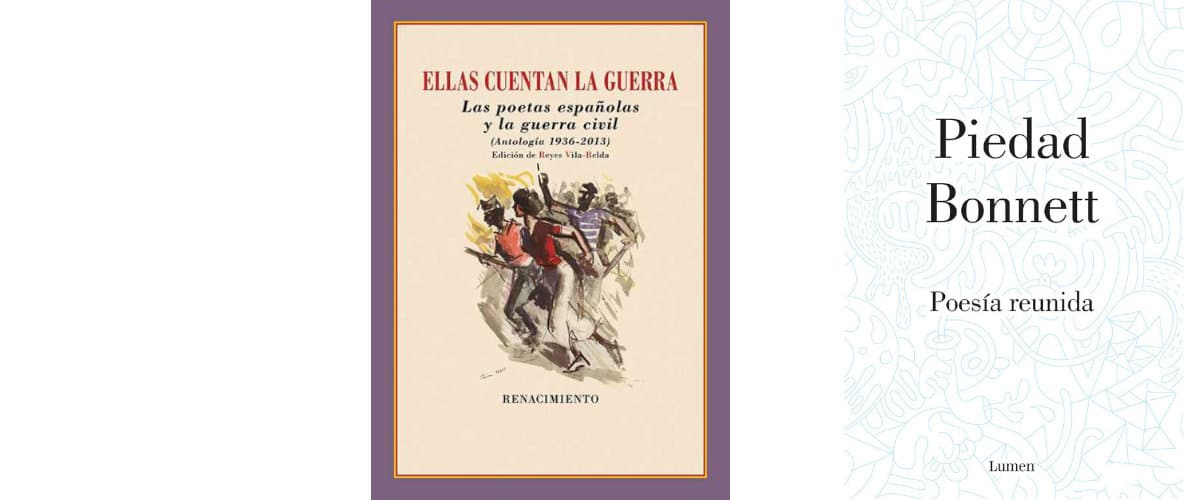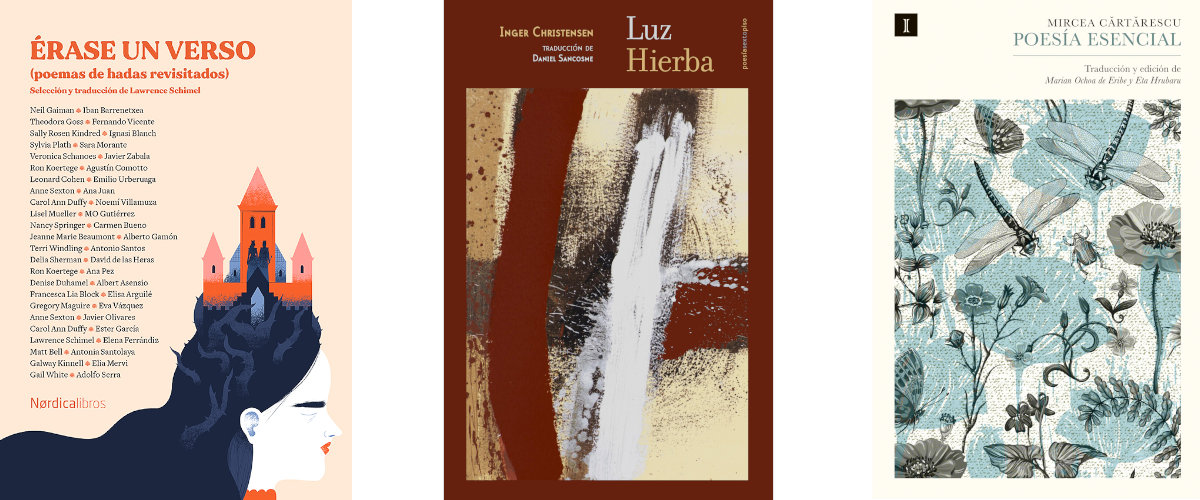
Many editorial novelties every week and we can't get to all of them. But just as a couple of weeks ago we suggested some books of stories to read by sipping, today we do the same with a genre that not all of us dare to, poetry, bringing together five novelties. Take note!
They tell the war. Spanish poets and the Civil War
- Several authors
- Renaissance Publishing House
- Reyes Vila-Belda Edition
This compilation adds to the efforts to recover the many Forgotten Spanish writers of the XNUMXth century. It brings together a selection of poems about the war and its consequences by twenty-four poets, such as Ángela Figuera, Carmen Conde, Gloria Fuertes or María Beneyto who remained in Spain, along with Rosa Chacel, Concha Méndez, Ernestina de Champourcin or Concha Zardoya among others, who they went into exile. All broke with the paternalistic conception that writing about the war was a masculine affair, although their names and their verses were often silenced. Their lives were affected by the fratricidal confrontation and their experiences articulated by trauma: they lost loved ones, witnessed shootings and bombings, suffered from scarcity, the sudden end of childhood or adolescence, or estrangement from the homeland. During the postwar period, the verses of many were censored or took time to print. For this reason, poems published many years later are included. Finally, the recent recovery of historical memory has inspired some poet to write on this subject. The verses of all of them are part of the collective memory of the nation.
Once upon a verse (revisited fairy poems)
- Several authors
- Nordica Books
- Selection and translation by Lawrence Schimel
In Once upon a verse we revisit the classic fairy tales from the hand of some of the best poets of the XNUMXth and XNUMXst centuries. Tales like Cinderella, Little Red Riding Hood and Rapunzel. For this edition, we have selected illustrators who have worked with Nórdica in these fifteen years of existence to graphically dialogue with the poems in a wonderful volume that is also an example of the concept of an illustrated book that we have at the publishing house. Among other illustrators and illustrators, you will find Ester García, Iban Barrenetxea, Fernando Vicente, Noemí Villanueva or Carmen Bueno.
Light / Grass
- inger christensen
- Sixth Floor Editorial
- Translation of Daniel Sancosmed Masía
- Bilingual edition
Luz (1962) and Hierba (1963) are both Inger Christensen's first poetry books. They were written by a poet who was not yet thirty years old, and yet they are not works of youth. In them there are already the themes and the demanding and experimental forms that will run through the rest of her production, and that will make her one of the greatest European poets of the XNUMXth century: the almost pantheistic identification with the landscapes and wild nature of Denmark; the obsession to find, beneath ordinary grammar, a total language capable of communicating with all beings, animate and inanimate, visible and invisible, that inhabit the world; and the need to unite music, poetry, visual arts, and mathematics into one whole. Because in these books the presence of shapes, colors and strokes of Chagall, Picasso, Pollock or Jorn, the painters he loved and who forged part of his imagination, is constant. But so is music, from liturgical to the sounds of everyday life. The importance of the musical is so important that, in his first recitals, Christensen sang some of these poems accompanied by avant-garde music.
Behind the apparent complexity of Luz y Hierba, lies the elemental impulse that guides every poet, every human being: the transformation of the world; the abolition of borders, physical and mental, that separate us from others; the invention of a new language that will ease our pain and reconcile us with the devastation of time.
Essential poetry
- Mircea Cartarescu
- Impediments Editorial
- Translation and editing by Marian Ochoa de Eribe and Eta Hrubaru
Cărtărescu, before the masterful storyteller we know, was a young poet. Member of the rebel writers group Known as "the blue jeans generation," poetry meant a special way of looking at things to him. An insect, a bridge or a mathematical equation; a phrase from Plato or a principle of biology; a smile or a koan of Zen Buddhism: it was all poetry. Cărtărescu wrote hundreds of poems during his youth. «We ate bread with poetry. Our world was pain, but it was also beauty. And everything that is beautiful and ideal is poetry. " But there came a day, when he was in his thirties, when he decided that he would never write another verse in his life. However, Cărtărescu never stopped being a poet and his legacy remains.
Poetry collected
- Mercy Bonnett
- Publisher Lumen
This volume brings together for the first time all the poetry of Piedad Bonnett, a work that began in 1989 with the appearance of De circulo y ceniza and which has had such fortunate seasons as The Thread of Days (1995), Tretas del weak (2004) and Explanciones no requested (2011), the most recent of his books of poetry and winner of the 2011 Casa de América Prize for American Poetry.
